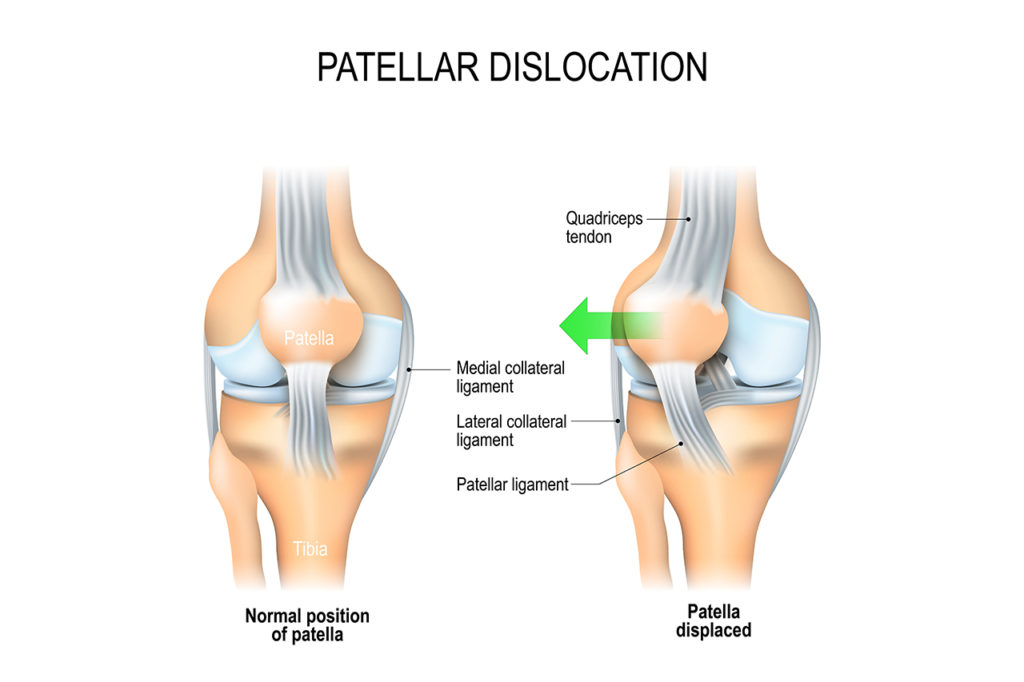- Home
- Treatment Of Recurrent Patella Dislocation
Treatment Of Recurrent Patella Dislocation
What is a patella (kneecap) dislocation?
patella dislocation is a dislocation of the kneecap — the patella — from its groove at the knee joint. The knee joint is a meeting of three bones: the thighbone, the shinbone and the kneecap in the middle. Normally, when you bend and straighten your leg, the kneecap slides up and down inside a vertical groove between the bottom end of the thighbone and the upper end of the shinbone (the trochlear groove). A network of tendons and ligaments secure the kneecap within the groove, flexing as it moves.

Types of Patella Dislocation?
Most of the time, a patella dislocation is an acute injury caused by force. This is called acute patella dislocation. It’s a relatively common injury, since the kneecap takes less force to dislocate than some other joints do. It’s also relatively easy to pop back in. Rarely, patella dislocation can also occur developmentally, from a condition called congenital patella dislocation (or trochlear dysplasia). When the patella develops outside of the trochlear groove, it can’t be moved back into place. These cases require surgery to correct.
What is the difference between a patella dislocation and a knee dislocation?
A patella dislocation is a dislocation of the knee cap. A “dislocated knee” involves the other two bones that make up the knee joint: the thighbone (femur) and the shinbone (tibia). When your knee is dislocated, the femur and tibia no longer connect at the knee joint. One of the bones has been forced backward or forward relative to the other bone. A dislocated knee (tibiofemoral dislocation) is rarer and more serious than a dislocated kneecap, because of the force required to misalign the leg bones and the damage it does to the ligaments.
BOOK AN APPOINTMENT
“KNEEO Technique” For Knee Replacements
What Causes The Patella to Dislocate?
Acute patellar dislocation is caused by force, either from a direct impact or a bad step that uses your own body weight against you. A heavy fall or collision can knock the kneecap out of place. However, it doesn’t always take that much. It may be caused by something as simple as a sudden turn that twists the knee while the lower leg is still firmly planted. Athletes and dancers, who are prone to quick pivots, are common victims of this.
Some people have patellar instability, which means that the tendons and ligaments that hold the kneecap in place are already loose and unstable. This might be caused by a previous injury or by another preexisting anatomical condition. An unstable kneecap will dislocate more easily.
People with congenital patellar dislocation (trochlear dysplasia) are born with the condition. It is often, but not always, related to other developmental abnormalities.
Who does patella dislocation affect?
Anyone can dislocate their patella through injury. However, certain people are more at risk, including:
- Athletes, especially in high-impact sports.
- Dancers, who are prone to quick pivots.
- Teenagers, whose joints and ligaments are looser from constant growth.
- Women, whose wider hips and looser ligaments put more lateral stress on the knee.
- Big and tall men, whose joints are under more pressure.
- People with patellar instability, especially if they have already dislocated their patella.
Doctors don’t know what causes congenital patella dislocation, but a higher incidence among family members suggests a genetic link. Certain other congenital conditions are also associated with it, including:
- Larson Syndrome.
- Arthrogryposis.
- Diastrophic Dysplasia.
- Nail-Patella Syndrome.
- Down Syndrome.
- Ellis-Van Creveld Syndrome.


